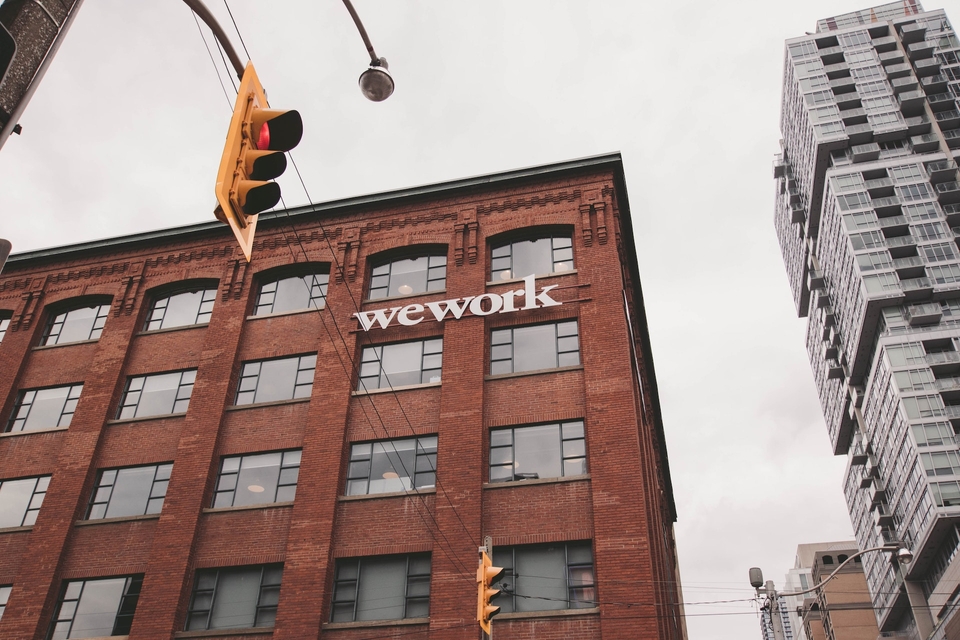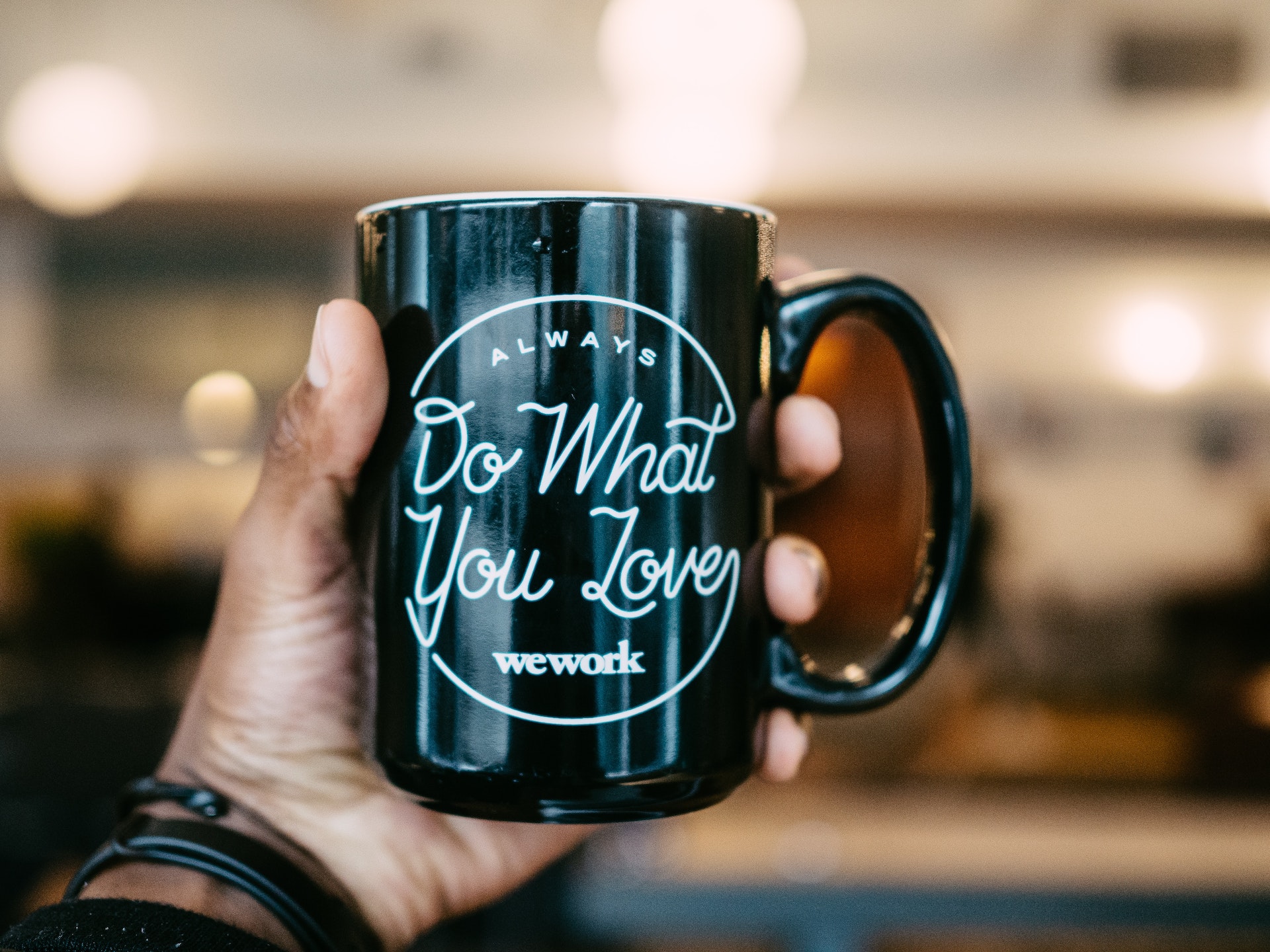WeWork: IPO, SPAC, and Branding Explained

Photo by Eloise Ambursley
Today, WeWork announced the pricing of its initial public offering.
Whether you’re an entrepreneur, small business owner, or startup founder, SPAC and IPO are terms you are bound to have heard. Making the decision to go public with your company is a big one, and understanding how and why companies actually do this can be overwhelming.
Here at ZeBrand, our goal is to help emerging businesses and startups succeed, so we are here to offer a short brief insight into WeWork’s branding, what the IPO and SPAC mean, and how they got there.
WeWork’s Branding Breakdown
From their stylistic approach to creating a structure with whitespace to their contemporary–but functional–visuals, we recommend looking at WeWork’s complete brand guidelines, which they refer to as their brand book.
We’re breaking down the most potent elements of WeWork’s branding strategy and design into easily digestible pieces and action items to help you get inspired and develop branding that genuinely expresses the heartbeat of your business.
By the way, if any of these branding terms are unfamiliar, don’t worry. We have a great beginner’s guide to branding terms posted here!
The Brand Story
Great design doesn’t happen in a vacuum. Design draws on the elements of a brand’s backstory. Impactful design weaves a visual companion to the company’s core values, mission, and vision.
WeWork’s core values are to:
- Do The Right Thing
- Be Entrepreneurial
- Be Human, Be Kind
- Strive To Be Better, Together
- Give Gratitude
And these values are echoed in WeWork’s vision to create workspaces in which people and companies can thrive. The company’s mission statement sums it up concisely, “Empowering tomorrow’s world at work.”
Can you clearly articulate the mission and vision of your business? If you need inspiration, check out our list of 100+ mission statements from brands around the globe.
How can the mission and vision of your business shape your branding?
The Business Model

To outwork its mission and vision, WeWork offers a simple concept: flexible workspace solutions for freelancers and Fortune 500 companies alike. Over 800 locations worldwide serve these innovators, thinkers, and collaborators.
WeWork leverages a clever business strategy. By signing long-term leasing agreements at hundreds of large office spaces worldwide, the company can negotiate a rental rate low enough to offer highly flexible short-term rental solutions to individuals and businesses. In addition, WeWork manages the long-term lease, giving lessees the benefit of on-demand workspaces that can meet their ever-changing needs.
Does your business model match your business’ mission and vision statement?
The Brand Strategy & Visual Identity
With WeWork’s vision and business model in mind, we can consider how the company’s visual branding complements its brand story.
WeWork’s branding identity was a collaborative effort between their internal design team, led by Kristen Cesiro and Gretel, a New York branding and strategy studio known for their work with MasterClass, CBS, and Nike iD.
Looking at WeWork’s brand identity, you might notice the wide indents and sharply structured layout. They cleverly use whitespace to create emphasis and guide your eye. Do you pick up on the framework motif? Just as WeWork is meant to be a flexible workspace, the design tone implies a flexible floorplan that adjusts to match your screen size.
This messaging is portrayed visually with utilitarian, under-designed, authentic branding. Not one-dimensional, but simple and breathable. Take the logo, for example. Rather than a symbol or picture, the logo is a wordmark. The word WeWork is spelled with no capital letters in Adobe Garamond Pro bold font. It pairs well with WeWork’s main copy font, Aperçu Pro Medium.
For color, WeWork uses primarily black and white to let the photos take center stage. When it does use color, WeWork relies on bold, strikingly sophisticated primary colors. In every instance, the colors are used to emphasize a photo subject. Their brand book says it plainly, “Color expresses the soul of WeWork. It complements imagery to offer flexibility of spirit and subject.”

WeWork targets its market with an empowering branding strategy. The company’s messaging and taglines are splashed across their brand book: “create your life’s work” and “Do What You Love.”
How can you creatively use color and design to describe your product or business goal?
What do you want people to think, feel, or experience when they encounter your brand?
In this article, we cover the most important components to include when you create your own brand book.
Our hope is that WeWork’s impeccable branding inspires you, as it does us
While traditional offices don’t exactly conjure up inspiration and empowerment, WeWork has successfully positioned itself as the coworking space that makes work enjoyable, passionate, collaborative, and significant.
How can you build your brand to communicate your business’ soul through messaging, design, color, and copy?
If you don’t know where to start…
We can help. We’re passionate about making design and branding accessible to every business, no matter the size. ZeBrand is a branding platform that lets you create your own online digital brand guidelines, including defining your own brand story, brand strategy, and visual identity. We believe you don’t have to be a global powerhouse like WeWork to get noticed.
IPO & SPAC Explained
Let’s now get into what an IPO is, the purpose, and some of the main benefits.
What is an IPO?
IPO or initial public offering is what the process of a company going public is called. This is done by selling stocks to buyers in the general public. IPO can be conducted by new companies or old companies which decide to be listed and public. Companies usually go public to raise equity capital by providing shares to the public or allowing existing shareholders to sell their shares to other people. Of course, the company selling shares does not have to repay public investors the capital. IPO is done with the aid of investment banks that allow shares to be up for trade in an open market.
What are the benefits of an IPO?
There are many benefits to listing a company at a stock exchange instead of selling it or taking on new members. Here are a few of the most important ones.
Risk Capital
Through venture capitalists and other larger investors, it can be hard to raise a company’s equity. Not only may there be a complete lack of investors, but the existing investors may be hesitant to provide a fair value, especially if the company or project is entrepreneurial. Here, an IPO will allow more generous and willing potential investors from the general public to participate.
Recognition
If a company is publicly listed, the public awareness and recognition of this company are sure to increase. It’s more attractive to potential customers and partners. If you wish to build and grow your brand but aren’t sure about going public yet, check out our branding platform at ZeBrand. We will guide you in the right direction to making important decisions for your business through our Brand DNA frameworks.
Easier Mergers
When a company is listed on the stock exchange, it becomes much simpler to facilitate a merger or acquisition. The entire process becomes faster and easier, which valuations are based on the market, so it is always fair and agreeable.
What is SPAC, and how does it work?
A special-purpose acquisitions company or SPAC is basically a shell company that consists of investors. This company has no other function except to raise money and eventually merge with another company. It doesn’t sell or provide any products or services. The only assets a SPAC owns are the money raised by its IPO.
A SPAC is also sometimes referred to as a “blank check company,“ as most people who buy into their IPO have no clue what the final merging target company will be. Once the money is raised and the merger is completed, these investors can receive shares of this company or redeem the SPAC shares to receive their original investment price along with acquired interest.
Why are SPACs so popular?
Going public with SPACs is all the rage right now, and for good reasons. The whole process of getting listed is much faster than that with an IPO. A merger with a shell company usually happens in 3–6 months on average, but an IPO takes over a year. IPO prices are also constantly fluctuating as it is market-based, while SPAC prices can be negotiated before the transaction is closed. SPAC investors are also usually willing to add additional funding to the original capital with the aim of helping the combined company grow. Especially for companies that have already gone down the IPO road, you can clearly see why a SPAC is the logical best option.
Key Takeaways
- IPO involves a company going public by selling shares to the general public
- SPAC involves investors funding a non-commercial company that is later used for a merge
- IPOs provide a fair investment value and raise brand recognition
- The SPAC process is much quicker and more efficient
We hope this guide put together by our team at ZeBrand has helped you gain more insight into why and how companies go public.
This is WeWork’s second time deciding to go for an IPO. We look forward to seeing startups and small businesses like theirs go through the branding journey that follows success!
ZeBrand x WeWork
Being that our team works out of the New York and Tokyo WeWork locations, our Founder/CEO Ryo Kikuchi and Co-Founder/Director of Customer Success Yuma Ako, had the pleasure of being featured in their recent video. Take a look below! We are honored to be a part of their story.


